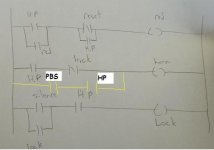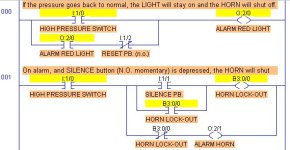What happens when the plant is a specialty chemical plant that only runs for two 24-hours days once a week? I once was an electrician for a project where the programmer used latched alarms. When the project was shut down, when many of the pumps and conveyors went off, that caused alarms. These alarms were latched on and held until the plant was started the following week. The operators complained loudly about getting bogus alarms during start-up when there were no alarm conditions.NO that is absolutely NOT the case, the alarm is current, has not been acknowledged, so there is no guarantee that the operator has seen it, to act on it accordingly.
What was causing these phantom bogus alarms? After I had to do much checking and testing of the wiring and the sensors, we decided the program was holding the alarms over from the previous shutdown the week before. The programmer was called in to fix the problem.
In some cases for some plants (nuclear plants ??), maybe the alarms should be held over. But for most plants, it will cause more problems than it solves.
Last edited:









